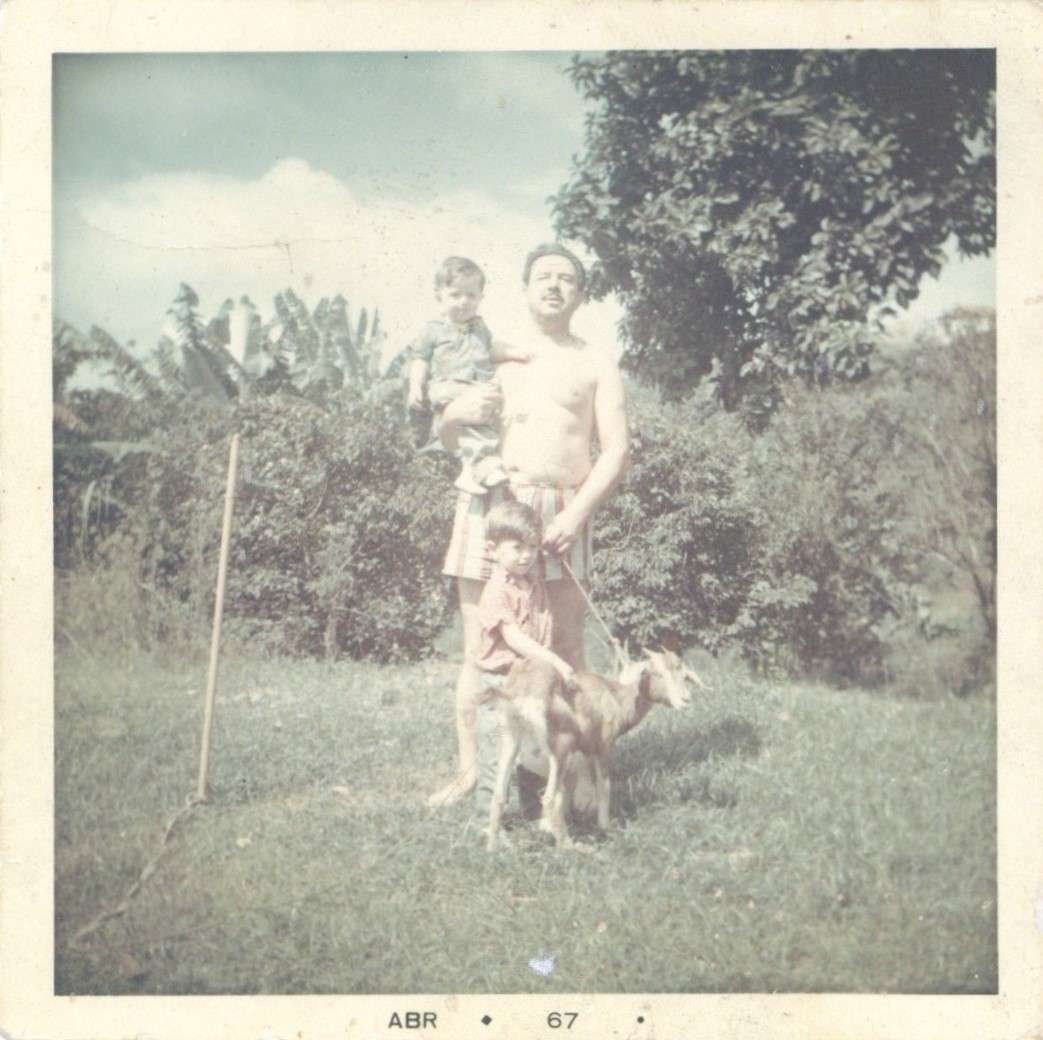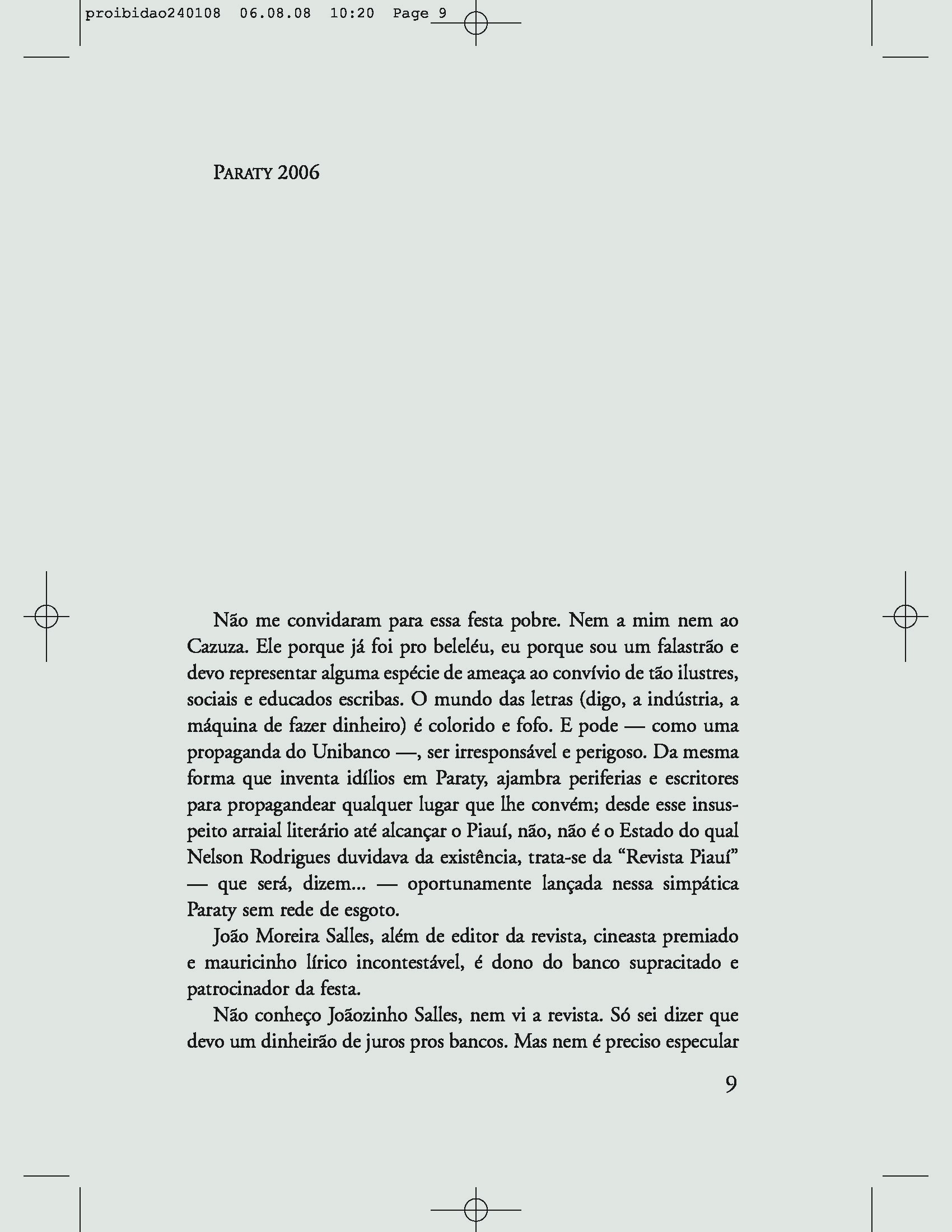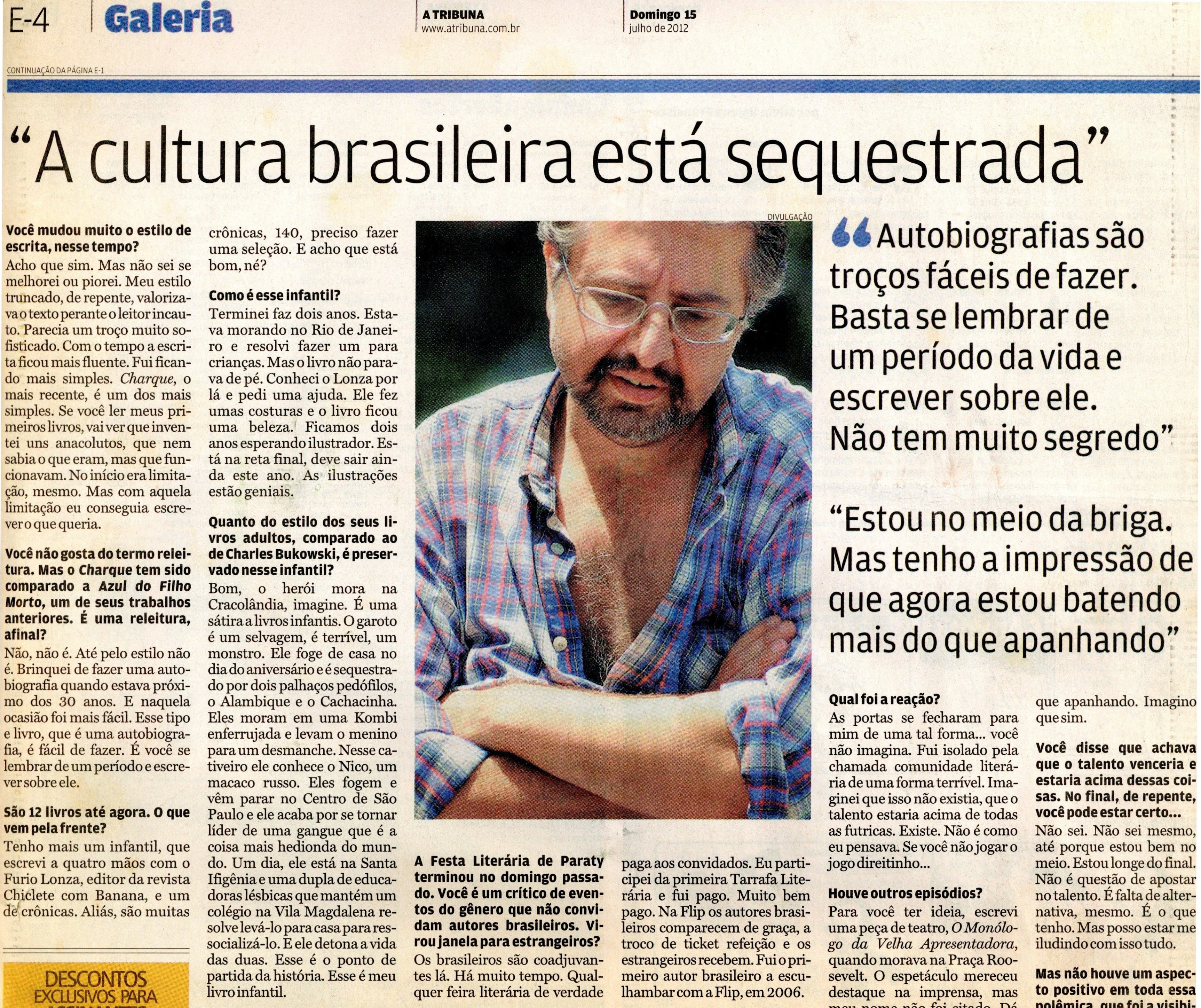We are delighted to announce that a second batch of materials for the Marcelo Mirisola Papers archive made it safe and sound to Michigan grounds last May.
The new batch comprises hundreds of pages of both typed and handwritten manuscripts by the contemporary Brazilian author, as well as a set of pictures – including the one that inspired him to write his O azul do filho morto (2002), a bildungsroman of sorts.
The picture was taken in 1967 and displays Mirisola on the lap of his maternal grandfather, a butcher of Italian descent who, oddly enough, encouraged his grandson to pursue a writing career. Mirisola’s older brother is also on the picture, caressing a little goat.

Marcelo Mirisola on his maternal grandfather's lap, Osasco, SP, 1967
Differently from the first batch of materials, the second batch also includes electronic files, sent in three flash drives with over one hundred texts produced between 2008 and 2024 – mainly chronicles, some of them censored, banned, and/or refused by the Brazilian mainstream media.
One of the refused texts sent in the flash drives is the corrosive political piece "Mutações e azares do Brasil", submitted to two outlets just a few months before the 2022 presidential election in Brazil.
Two versions of "Entregar nas mãos de Deus e esperar pelo pior" are also in the flash drives. This piece is a critique of the remarks delivered by the president of the Supreme Federal Court of Brazil at the Brazil Conference held at Harvard University in 2022 (an edited, cleaned version of this piece appeared at Revista Bula).
Included in the flash drives is also the banned chronicle "Os filhos das trevas e da feiúra", released in 2014 at the Brazilian Yahoo news portal website – but removed from the platform due to a lawsuit by the televangelist preacher who is himself the subject of the chronicle. The legal minutes of the still ongoing lawsuit process against Mirisola were also made available to us in electronic format.
Moreover, we also received the electronic file of Mirisola's Proibidão (2008), an out-of-stock collection of chronicles originally refused by mainstream Brazilian media outlets that includes an inflexion point in Marcelo Mirisola's writing career: the four-page chronicle "Parati 2006".

First page of Paraty 2006, with crop marks
In addition, the new batch comprises over twenty journalistic pieces by or about the renowned contemporary Brazilian author. These journalistic pieces, published between 2001 and 2021, appear in a range of newspapers, from prestigious national outlets to smaller regional publications.
Among the interviews in low-circulation newspapers we find a rare one published in 2012 in A Tribuna from Santos, SP – a city that played an important role in the sentimental education of the author.

Interview with Marcelo Mirisola, A Tribuna, July 15, 2012
In the coming months, we will add all these new materials to the Marcelo Mirisola Papers finding-aid, ensuring they are fully accessible for research and study.